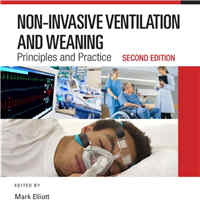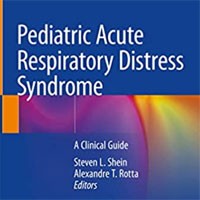Tag: pediatrics
Epidemiology and Outcomes of Critically Ill Children at Risk for PARDS
The Pediatric Acute Lung Injury Consensus Conference “at-risk for pediatric acute respiratory distress syndrome” criteria identify critically ill children at high risk of pediatric acute respiratory distress syndrome... read more
Weaning from Ventilation and Extubation of Children in Critical Care
By reading this article, you should be able to: - Identify the predictors of successful extubation in pediatric ICU (PICU) patients. - Describe the factors affecting mechanical ventilator weaning in PICU patients. -... read more
Balanced vs. Unbalanced Fluid in Critically Ill Children
Our systematic review found some evidence of improvement in blood pH and bicarbonate values in critically ill children after 4–12 hours of fluid bolus therapy with balanced fluid compared with the unbalanced fluid. However,... read more
The 1,3,5 Approach to Pediatric Cardiac Arrest
While pediatric cardiac arrests are thankfully rare, their shock waves can seem incalculable. Several studies have outlined the mental health toll that these events can have on everyone involved. There is an appreciable... read more
Interdisciplinary Care of Children with Severe Bronchopulmonary Dysplasia
Advances in perinatal care have dramatically improved survival of extremely preterm infants and the incidence of bronchopulmonary dysplasia (BPD) has not changed over the past few decades, which likely reflects the impact... read more
Virtual Craniofacial Clinic Outcomes for Assessing Plagiocephaly During the COVID-19 Pandemic
Virtual clinic encounters resulted in comparable diagnostic accuracy. The trend toward frequent follow-up assessments and changes in the final diagnosis in the virtual clinic cohort has indicated a level of diagnostic uncertainty... read more
Postintubation Sedation Administration in the Pediatric ED
Most pediatric patients do not receive PIS within an adequate time frame. Patients who receive long-acting paralytic agents are much less likely to be adequately sedated after rapid sequence intubation (RSI) compared with... read more
Peri-arrest Bolus Epinephrine Practices Amongst Pediatric Resuscitation Experts
In this multinational survey of pediatric resuscitation experts, endorsement of peri-arrest bolus epinephrine use was nearly universal, though a few clinicians cited lack of evidence to support this practice. There was... read more
Non-Invasive Ventilation and Weaning: Principles and Practice, Second Edition
Now in full-colour, this eagerly-anticipated second edition continues to be the most comprehensive resource available on non-invasive ventilation (NIV), both in the hospital and at home. Reflecting a global perspective with... read more

Pediatric Acute Respiratory Distress Syndrome
This book provides a concise yet comprehensive overview of pediatric acute respiratory distress syndrome (PARDS). The text reviews the emerging science behind the new PARDS definition; explores epidemiology, pathobiology,... read more

A New Risk Assessment Model for Hospital-Acquired Venous Thromboembolism in Critically Ill Children
Using the multicenter Children’s Hospital-Acquired Thrombosis registry, we identified five independent risk factors for hospital-acquired venous thromboembolism in critically ill children, deriving a new hospital-acquired... read more
Predicting Outcomes in Pediatric Trauma Patients Using rSI Multiplied by GCS
Reverse shock index multiplied by Glasgow Coma Scale outperformed SI and shock index pediatric age-adjusted (SIPA) in the early identification of traumatically injured children at risk for early interventions, such as blood... read more
Hypothermia and Health-related Quality of Life Among Pediatric Cardiac Arrest Survivors
Out-of-hospital or in-hospital cardiac arrest treated with therapeutic hypothermia was associated with higher health-related quality of life scores despite having association with higher lactate and lower pH after resuscitation.... read more
Energy Transmission in Mechanically Ventilated Children
Mechanical energy (ME) better related to underlying lung pathology and patient outcome than MP. The delivery of generated energy to the lung was not dependent on endotracheal tube diameter (ETT) size during PC ventilation.... read more
Pediatric Critical Care Study Guide: Text and Review
This is the first comprehensive study guide covering all aspects of pediatric critical care medicine. It fills a void that exists in learning resources currently available to pediatric critical care practitioners. The major... read more

Intraoperative Hypotension and AKI after Noncardiac Surgery in Infants and Children
In distinct contrast to adults, the authors did not find any association between intraoperative hypotension and postoperative renal injury. Avoiding short periods of hypotension should not be the clinician’s primary concern... read more
ECMO in Children Receiving HCT and Immune Effector Cell Therapy
Use of extracorporeal membrane oxygenation (ECMO) in children receiving hematopoietic cell transplantation (HCT) and immune effector cell therapy is controversial and evidence-based guidelines have not been established. Remarkable... read more
Loading and Increasing Vancomycin Dose Frequency Not Advantageous for Gram-Positive Sepsis in Infants
The efficacy of a vancomycin loading dose with more frequent dosing and shorter duration of treatment was comparable to standard dosing regimens for gram-positive sepsis in infants but with heightened risk for impaired hearing,... read more
Continuous RRT in Critically Ill Children
The survival rate of patients received continuous renal-replacement therapy (RRT) treatment in our center has improved over past 10 years, and some changes have taken place during these periods. Among them, early initiation... read more
Intubation Practice and Outcomes Among Pediatric Emergency Departments
While tracheal intubation (TI) characteristics vary between pediatric Emergency Departments and ICUs, outcomes are similar. Shock and limited mouth opening were independently associated with adverse TI events in the Emergency... read more
Endotracheal Intubation vs. Supraglottic Procedure in Pediatric OHCA
The findings of this large cohort study suggest that endotracheal intubation (ETI) in pediatric out-of-hospital cardiac arrest (OHCA), although performed by trained physicians, is associated with a worse outcome, regardless... read more
Outcomes of Catheter-Related Arterial and Venous Thrombosis After Enoxaparin Therapy in Neonates and Infants With Congenital Heart Disease
A high proportion of vascular catheter-related thrombi identified in infants with congenital heart disease resolve with enoxaparin treatment. In all patients with thrombosis, arterial versus venous thrombosis is associated... read more









